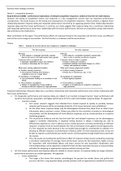Summary
Summary BLS (articles)
- Course
- Institution
Summary of all articles that you should know for the exam, including the answer to the main exam questions, such as the main contribution and the proposed relationships discussed in the articles.
[Show more]



